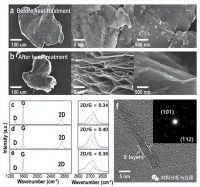new study saying that they can adjust the interaction between qubits in a quantum computer, which means that quantum computers can create new structures of matter with novel properties, revealing material properties such as superconductivity.
Most solid materials are made up of atoms or molecules that are affected by forces from their “neighbors,” the researchers say, a principle known as locality, a crystal lattice common in compounds such as ice or salts. The structure comes from this. But quantum computers don’t work that way, so they might be able to manipulate matter to fight locality.
To investigate this possibility, Joseph Tyndall of Oxford University and his colleagues created a mathematical model that describes a quantum particle system that interacts with any other particle, not just its neighbors. The team then used graph theory to determine whether such a system would actually emerge.
They found that this process revealed an unusual geometry in which some particles interacted with others and some were isolated. Using algorithms to calculate certain properties of these particles, they discovered that new structures can change their magnetic properties in ways unlike anything in nature.
“It’s not clear how this property behaves in the real world and what uses it has, but it is possible that we could produce this phenomenon on a quantum computer,” said Tyndall. “With ion trap quantum computers, etc., we can make almost any qubit possible. Interactions occur. So these irregular structures that we are talking about can be realized.”
Stephen Clark, from the University of Bristol, said it was a very interesting result that could reveal unprecedented new systems and connections – which normally do not occur in nature. But it is currently difficult to understand how these systems function in the real world, because Tyndall’s team only considered connections between particles, not distances. “It would be very interesting if they could produce exotic properties like superconductivity.”
Tyndall says it’s not yet at the stage where these new discoveries can be used to create matter, but this research is a first step. Their next plan is to move from static computing to studying how these systems evolve over time.




GIPHY App Key not set. Please check settings